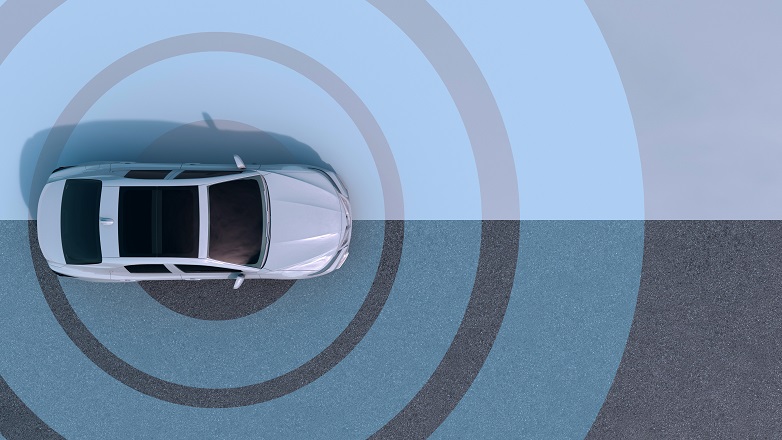Legal Alert: New consultation paper issued on the legal regulation of driverless vehicles
On 8 November 2018, the Law Commission[1] issued a new consultation paper on the legal and regulatory framework for automated vehicles.
This consultation forms part of a three-year project to examine the options for the regulation of automated vehicles, so as to enable their safe and effective deployment in the UK. The Law Commission's aim is to publish a final report with recommendations for legislative changes by March 2021. The review:
- applies to the laws of England, Wales and Scotland;
- is confined to road vehicles, with a focus on passenger transport as opposed to freight delivery[2]; and
- relates to automated driving systems which do not need to be controlled or monitored by a human driver for at least part of a journey[3].
Although the consultation paper does not represent the Law Commission's conclusive views, it does provide a useful indication of: (i) where current laws and regulations may not be fit for purpose in relation to driverless cars (especially given that the majority of current laws concerning road vehicles were not drafted with autonomous technology in mind); and (ii) the likely areas of future reform.
The key issues and provisional proposals
The consultation focuses on three key themes[4]:
- How safety can be assured before and after automated driving systems are deployed.
- The need for suitable legal mechanisms for attributing civil and criminal liability when things go wrong.
- Adapting the road rules for artificial intelligence decision-making.
The Law Commission's considerations, initial findings and provisional proposals include the following:
- The 'user-in-charge' concept: An automated vehicle should have a person who is qualified and fit to drive, unless the vehicle is specifically authorised as being able to operate without one.This is because a human may be required to take over the driving task in certain circumstances, including after a vehicle has reacted to a problem and come to a stop.This new category of user could bear criminal liability for offences which do not arise from the dynamic driving task (for example, insurance/ maintenance of the vehicle and accident reporting).The concept does however raise important questions over the boundaries of responsibility between the automated system and the human user, such as whether the user should be required to take steps to avert the risk of serious injury if that user is aware of the risk and notwithstanding the engagement of the automated functionality.
- Product safety and approval: First, every automated driving system should be backed by an entity (the 'automated driving system entity') which takes responsibility for that system's safety.Secondly, a separate safety assurance scheme and agency could be established to authorise driving systems and monitor safety after vehicles are on the road[5] – particularly where vehicles are modified after being registered for road use[6].
- Civil liability: The Automated and Electric Vehicles Act 2018 already provides a statutory basis for compensating victims through insurance where automated vehicles cause damage.However, further clarification may be required on: (i) the aspect of 'causation'; (ii) the operation of contributory negligence (as the current provisions entail applying the standards of human fault to the behaviour of an automated system); and (iii) retaining data.While the current law on manufacturers' and retailers' liability is generally adequate, there may be a need to review how product liability applies to defective software updates that are not supplied alongside physical goods.
- Criminal liability: When an automated driving system is conducting the entire driving task, compliance with traffic laws effectively becomes the remit of the 'automated driving system entity' as opposed to the human user.Accordingly, it may be helpful to provide human users with a safe harbour to clarify when they are not liable for criminal offences arising from the driving task itself.In addition, new criminal offences could be created: (i) where individuals obstruct automated vehicles (for example, by interfering with a vehicle's sensors or disrupting road infrastructure); and (ii) for corporations where serious negligence by a developer of a driverless system results in death or serious injury.
- Artificial intelligence: If a child runs out in front of an automated vehicle so suddenly for the vehicle to avoid the child by braking alone, should the vehicle disobey the current road rules by swerving onto the pavement to avoid the child?Should an automated vehicle be able to exceed the speed limit in order to overtake a vehicle as quickly as possible so as to avoid a collision?Such challenging ethical questions over AI decision-making need to be considered in the context of potentially modifying the current road rules – possibly through the creation of a digital highway code.
What next?
The consultation invites responses (whether by using an online form, by e-mail or by post) until 8 February 2019. Please do get in touch if you are interested in discussing any of the issues raised.
The Law Commission is eager to receive responses from all stakeholders who may be affected by automated vehicles. Once responses have been received, it is aiming to publish: (i) a work programme during 2019; and (ii) a final report for legislative recommendations by March 2021.
A link to the consultation paper can be found here (with the consultation questions listed in Chapter 10 at pages 185-191).
[1] Together with the Scottish Law Commission.
[2] The consultation does not extend to airborne craft, drones or vehicles designed to travel on pavements, footways and footpaths.
[3] As consistent with the definition of a 'vehicle driving itself' under section 8(1)(a) of the Automated and Electric Vehicles Act 2018.
[4] Areas outside the consultation's scope include data protection and privacy, cyber, theft, cyber security/ hacking and land use policy.
[5] Alternatively, the agency could form part of an existing one such as the Vehicle Certification Agency (VCA) or Driver and Vehicle Standards Agency (DVSA).
[6] It is not the Law Commission's intention to replicate the work being undertaken on vehicle safety and type approvals at the EU and international levels, including under the United Nations Economic Commission for Europe Regulations.




